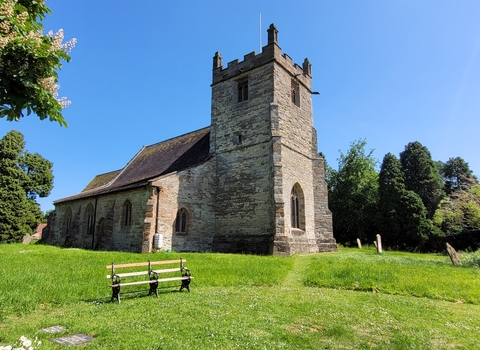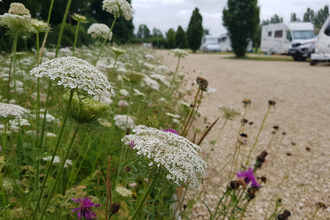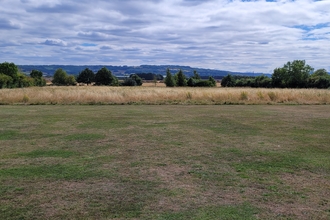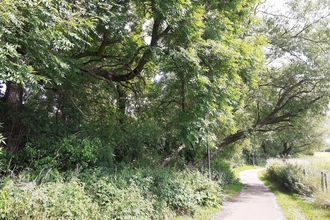The historic village of Feckenham has recently undertaken works to enhance the biodiversity around the village, as well as preserving their archaeological sites.
The Friends of Feckenham Church were really keen to enhance the biodiversity of the churchyard and surrounding village so got in touch with the Natural Networks team. Following a tree survey and our Biodiversity Enhancement Assessment, the churchyard of St John the Baptist underwent a number of biodiversity enhancements. Firstly, a number of ash and conifer trees were removed for health and safety concerns. Where possible all timber was left on site to create log piles for invertebrates and overwintering reptiles. 15 new trees, including apple and plum, were planted to replace the removed ones. A hibernaculum was created and 19 bird and bat boxes, plus a hedgehog house, were installed across the site.
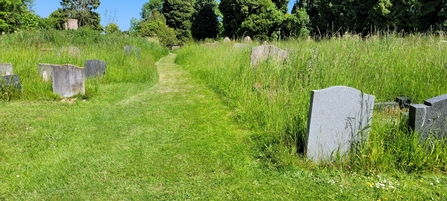
Feckenham Churchyard by Finley Reynolds
In addition to the tree works, advice on management of the grassland around the churchyard was given. Now sensitively managed, swathes of long wildflower-rich grasses complement the shorter lawn areas around some of the graves.
Across the site, over 5,000 bulbs and plug plants were planted including spring flowers, such as primroses, wild daffodils and lesser celandine, and summer flowering black knapweed, field scabious and bird’s-foot trefoil.
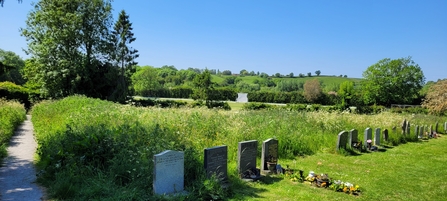
Feckenham Churchyard by Finley Reynolds
The site of Feckenham Royal Manor now hosts the village’s football pitch and play area but surrounding this is a moat that is listed as a Scheduled Ancient Monument. The moat had been overrun with snowberry, an invasive and non-native shrub. As part of the Natural Networks biodiversity advice, and upkeep of the schedule monument status, the snowberry was removed by Redditch Borough Council to allow for native vegetation and wildflowers to adorn the moat.
Along the northern edge of the moat, a mature hedgerow of native blackthorn is now sensitively managed to provide a vital habitat for many scrub breeding birds as well as brown hairstreak butterflies, a local priority species.
Across the rest of Feckenham village, Natural Networks has helped fund some additional fruit trees along Astwood Lane, two wild rambling roses in the village pound and wildflower bulbs and plug plants were added around the village hall, including bluebells, cowslips and daffodils.
Overall, the works completed across Feckenham show how a small village ‘Friends of’ group can really make a difference to their patch, for both wildlife and the local community.

